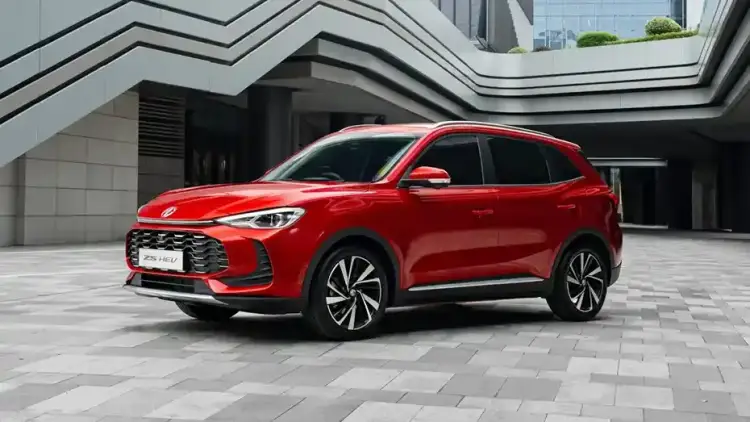- UAE Tops the Global List as China’s New Export Gateway
- Saudi Arabia Emerges as a Key Consumer Hub for Chinese Cars
- Russia Declines as Kazakhstan Rises Strong
- Chinese Electric Vehicles Between Europe and the Middle East
Amid a global shift in automotive trade, China continues to reshape the map of international car markets. The latest data from January to August 2025 reveals an unprecedented surge in Chinese car exports to the Middle East. The United Arab Emirates has emerged as the top destination, followed by Saudi Arabia, which has strengthened its position as a key consumer hub in the region. These numbers reflect more than commercial growth; they signify a major transformation in the balance of power across the global automotive industry.
UAE Tops the Global List as China’s New Export Gateway

The UAE continues to establish itself as a central global hub for the automotive trade, securing the top spot among the largest destinations for Chinese passenger car exports in the first eight months of 2025.
Exports to the UAE: 299,584 units
Annual growth rate: +55.8%
Global ranking: 1st
This remarkable growth shows that the UAE is no longer just a consumer market but a worldwide logistics and re-export center serving the Middle East and North Africa. Its success is fueled by advanced infrastructure, highly flexible free zones, and government policies that encourage industrial and commercial investment.
Today, the UAE stands not only as a gateway for Chinese cars into the region but also as a strategic partner reshaping the global trade dynamics of the automotive industry.
Saudi Arabia Emerges as a Key Consumer Hub for Chinese Cars

Saudi Arabia ranked seventh globally among the largest importers of Chinese passenger vehicles, reflecting the strong domestic demand and growing consumer trust in modern Chinese automotive brands.
Exports to Saudi Arabia: 163,519 units
Annual growth rate: +26.5%
Global ranking: 7th
This steady growth highlights the expanding footprint of Chinese automakers in the Saudi market. Established brands such as BYDEgypt BYDKSA BYDUAE BYDKuwait BYDQatar BYDOman BYDBahrain BYD, ChanganUAE ChanganBahrain ChanganEgypt ChanganKSA ChanganKuwait ChanganOman ChanganQatar Changan, HavalUAE HavalKSA HavalKuwait HavalQatar HavalOman HavalBahrain HavalEgypt Haval, and Geely have already secured strong positions, while several new entrants are preparing to join in the coming years, including Voyah, IM Hero, Xpeng, Leapmotor, Avatr, Nio, and Deepal.
The Saudi market has now become one of the most significant global destinations for Chinese car manufacturers, driven by its size, purchasing power, and diverse customer base ranging from families to young drivers seeking affordable and stylish cars.
Russia Declines as Kazakhstan Rises Strong

While Russia’s role as a major destination for Chinese car exports has declined due to geopolitical tensions, Kazakhstan has emerged as one of the biggest winners in this shifting landscape.
Russia: 273,030 units
Change rate: +55.9%
Kazakhstan: 115,300 units
Growth rate: +96.4% (the highest among all markets)
This sharp contrast reflects China’s strategic redirection of exports toward Central Asian countries, now key participants in the Belt and Road Initiative. With increased investment in assembly plants and logistics hubs across Kazakhstan, the nation is rapidly evolving into a rising distribution platform for Chinese vehicles throughout the region.
Chinese Electric Vehicles Between Europe and the Middle East

China’s rapid expansion is not limited to traditional cars but extends strongly into the electric vehicle sector, which continues to grow fast across both European and Middle Eastern markets.
Belgium: 199,000 units, serving as a major hub for distributing Chinese electric vehicles across Europe
United Kingdom: +49.7% growth, driven by government incentives and EV adoption programs
Mexico: +74.9% increase, reflecting growing consumer demand for affordable electric options
Indonesia: +84.7% surge, supported by national policies promoting clean mobility
United Arab Emirates: +47.7% growth, ranking sixth globally in Chinese EV imports
In the UAE, the National Electric Vehicle Strategy continues to accelerate this shift, aiming for 50% of all cars on the road to be electric by 2050.
With these developments, the Middle East, especially the UAE and Saudi Arabia, has transformed from a mere import market into a strategic center reshaping the global footprint of China’s automotive industry, opening a new chapter of competition in the electric and future mobility era.













